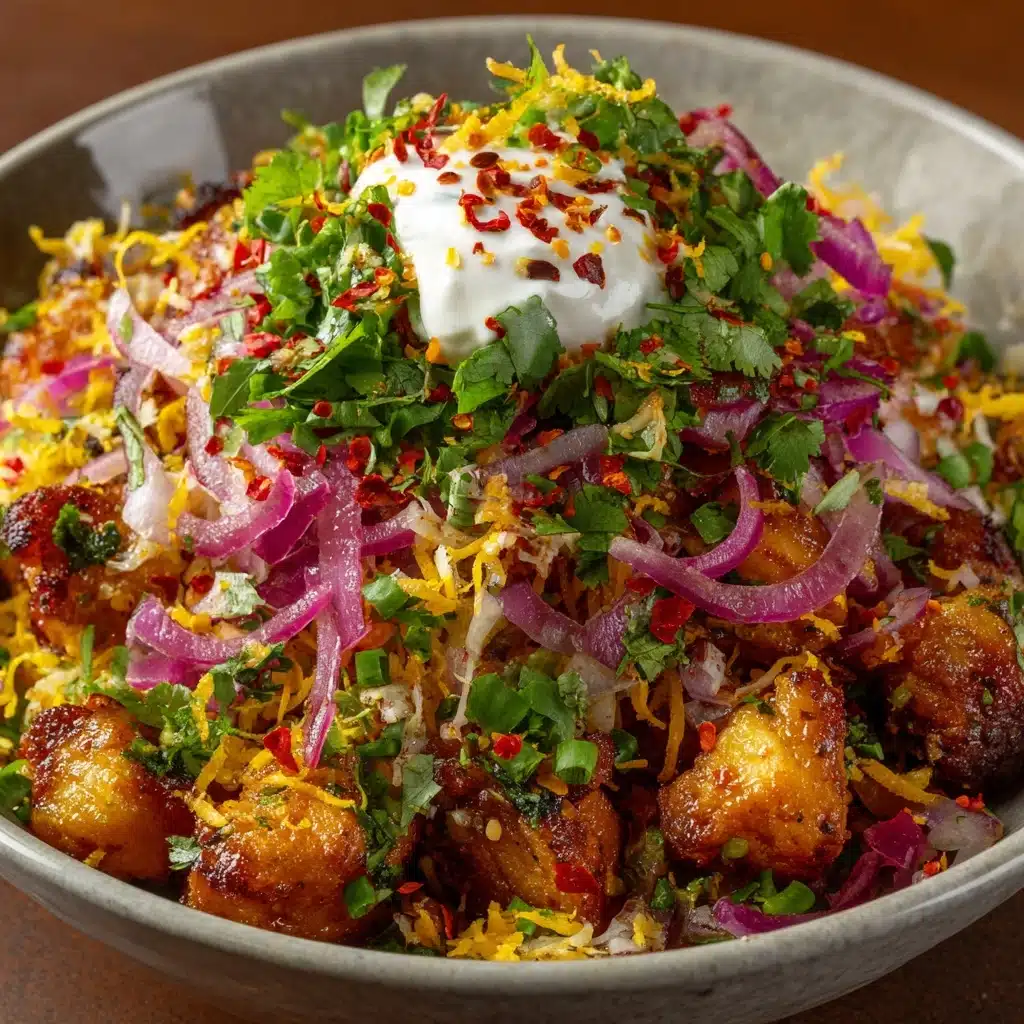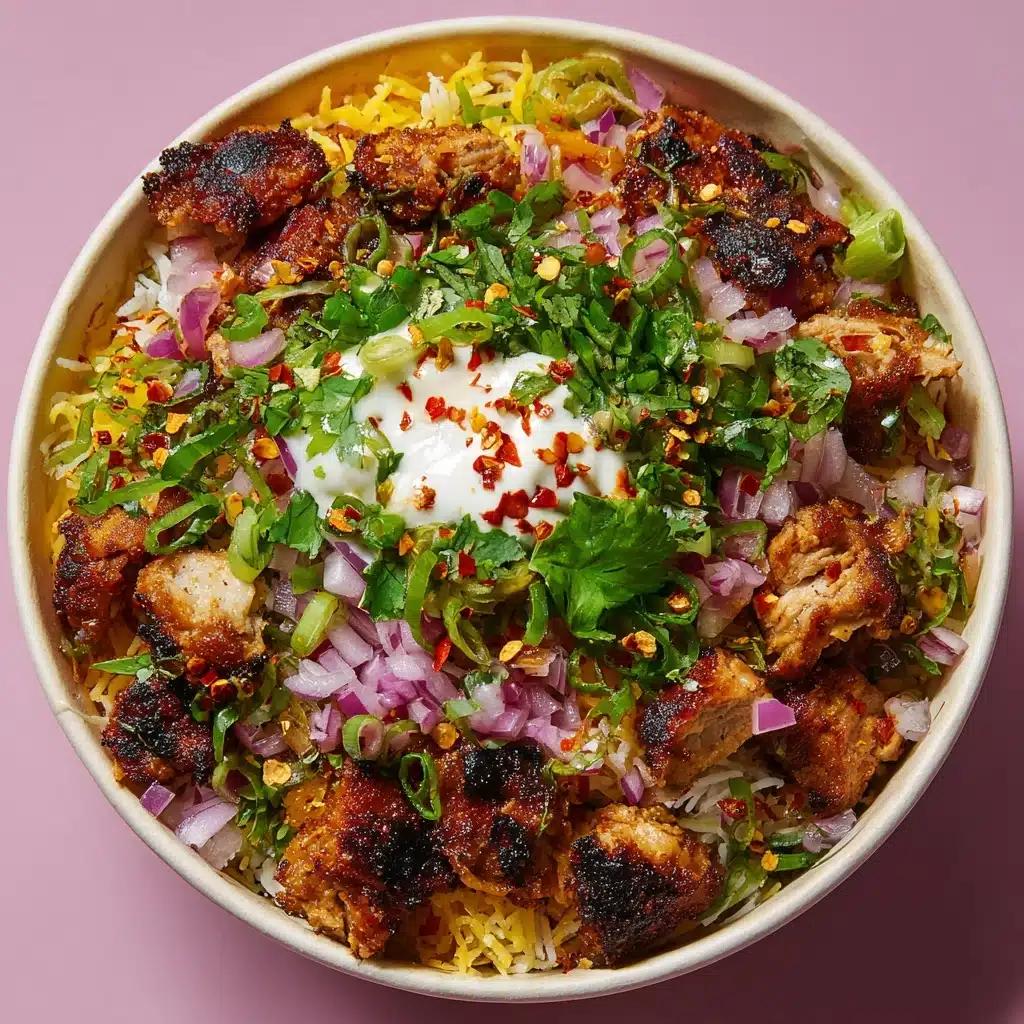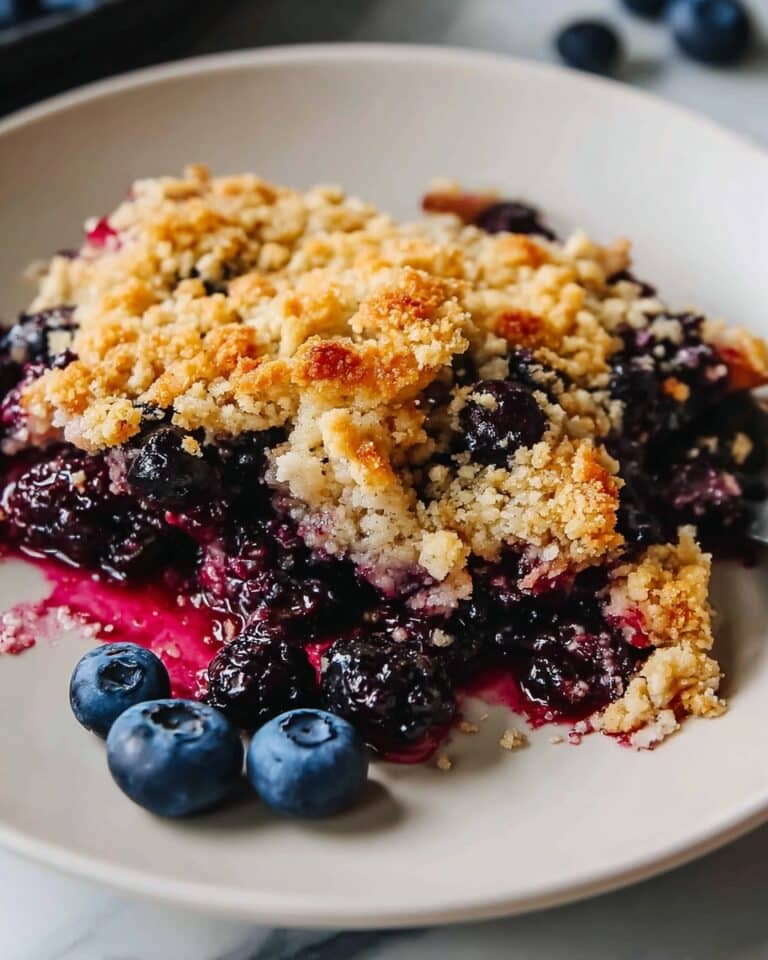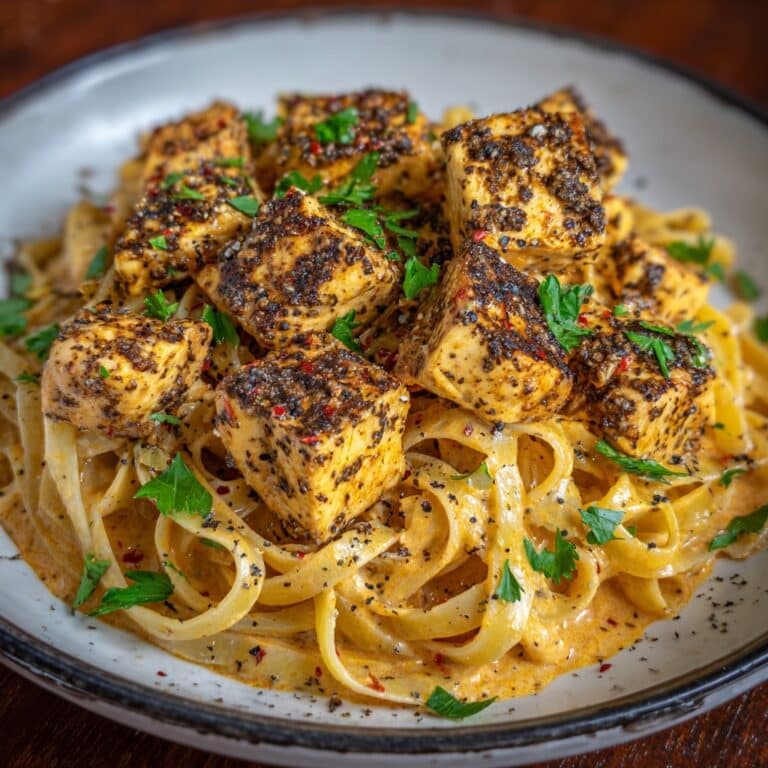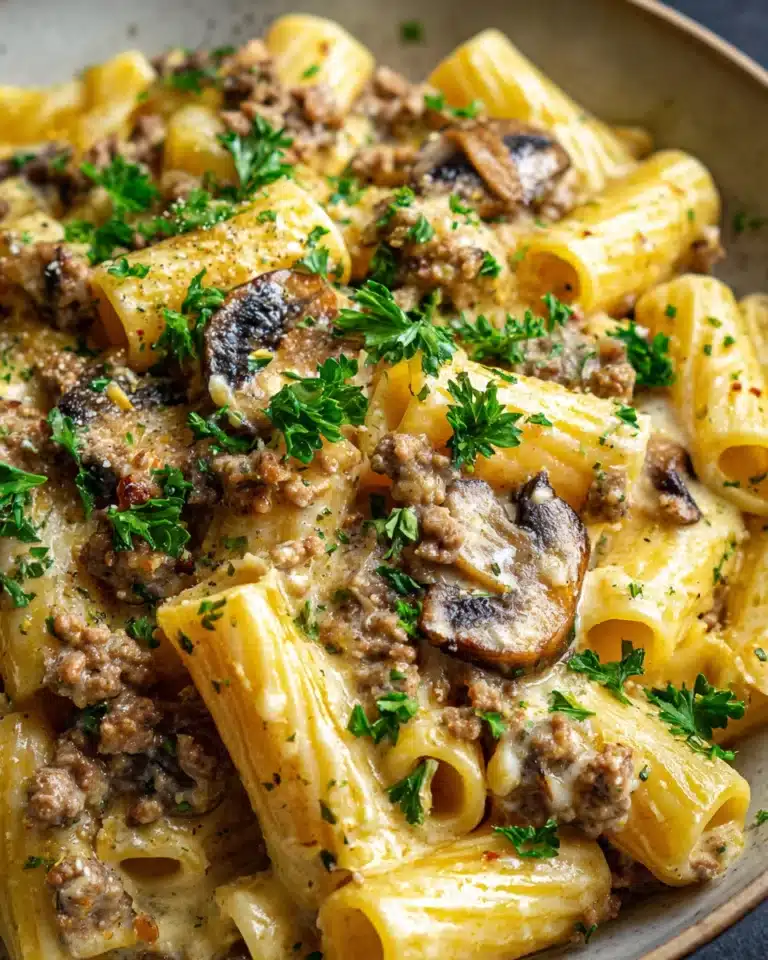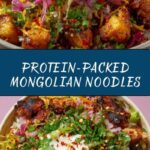If you’re hunting for an energizing weeknight meal that doesn’t skimp on bold flavors while packing a nutritional punch, you have to try High Protein Mongolian Noodles. This dish seamlessly blends savory, slightly sweet Mongolian-inspired sauce with chewy, protein-rich noodles and a bounty of vibrant veggies. Imagine wok-tossed strands of noodles clinging to glossy sauce, speckled with green onions and sesame seeds — every bite is hearty and deeply satisfying. Whether you’re fueling up for a big day, looking for post-workout fuel, or just craving something that’s both warming and sensible, these High Protein Mongolian Noodles are about to become your go-to recipe.
Ingredients You’ll Need
You won’t believe how a handful of everyday ingredients can transform into something that tastes this indulgent! Each item here not only adds flavor and texture but also helps create the vivid color and nutrition profile that sets these High Protein Mongolian Noodles apart. Gather these simple building blocks, and you’re already halfway to noodle bliss.
- High-protein noodles (8 oz): Choose edamame, chickpea, or lentil noodles for a seriously satisfying chew and an extra boost of plant-based protein.
- Lean ground beef or ground turkey (1 lb): Opt for the leanest meat available to keep things hearty but still light; either one will soak up the sauce!
- Olive oil (1 tablespoon): Just a little drizzle is all you need for sautéing, adding richness without excess grease.
- Low-sodium soy sauce (1/2 cup): The salty-sweet backbone of the sauce keeps things umami-packed without going overboard on sodium.
- Water (1/4 cup): A touch to loosen the sauce and help everything meld together seamlessly.
- Brown sugar or coconut sugar (2 tablespoons): For a hint of caramelized sweetness that balances the savory elements perfectly.
- Hoisin sauce (1 tablespoon): Adds depth, tang, and that unmistakable glossy finish.
- Rice vinegar (1 tablespoon): Just a splash brightens up the entire dish with gentle acidity.
- Garlic cloves, minced (3): Essential for an aromatic, savory backbone.
- Fresh ginger, grated (1 teaspoon): Offers gentle heat and zing that wakes up all the other flavors.
- Cornstarch slurry (1 tablespoon cornstarch + 2 tablespoons water): This quick mix gives you the perfect silky sauce texture.
- Shredded carrots (1 cup): Adds crunch, color, and a touch of natural sweetness.
- Snap peas or bell pepper strips (1 cup): Either veggie delivers a crisp bite and gorgeous color pop.
- Green onions, chopped (2): Sprinkle on for fresh flavor and a classic Mongolian finish.
- Sesame seeds for garnish (1 tablespoon, optional): For extra crunch and gorgeous presentation.
How to Make High Protein Mongolian Noodles
Step 1: Cook the Noodles
Bring a big pot of water to a rolling boil, add your high-protein noodles, and cook according to package directions until just al dente. These noodles tend to cook quickly, so keep an eye on them and give a quick taste test for perfect texture. Once cooked, drain the noodles, rinse briefly with cold water to stop the cooking, and set aside — this keeps them from sticking and ensures they’ll soak up all the delicious sauce in the next steps.
Step 2: Brown the Meat
Heat the olive oil in a large skillet or wok over medium-high heat. Add the lean ground beef or turkey and break it up with a spatula, stirring frequently. Cook until the meat is beautifully browned and no pink remains, which gives the finished High Protein Mongolian Noodles that hearty, satisfying bite. Browning the meat well at this stage is key for layering in savory depth.
Step 3: Sauté Aromatics
Push the cooked meat to one side and add the minced garlic and grated ginger directly to the pan. Sauté for 1–2 minutes, stirring constantly, just until fragrant. This quick step infuses the oil and meat with loads of aroma and makes your whole kitchen smell irresistible.
Step 4: Make the Mongolian Sauce
In a small bowl, whisk together the low-sodium soy sauce, water, brown sugar or coconut sugar, hoisin sauce, and rice vinegar. Pour this vibrant mixture into your skillet with the meat and aromatics. Let it come to a gentle simmer so all the flavors begin to meld, sending up a cloud of mouthwatering steam.
Step 5: Thicken the Sauce
Stir the cornstarch slurry (just cornstarch and water mixed until smooth) into the simmering sauce. Watch as the sauce thickens to a glossy, luxurious consistency that will cling perfectly to the noodles and veggies. This step is what turns the sauce from watery to wonderfully silky!
Step 6: Cook the Veggies
Toss in the shredded carrots and snap peas (or bell pepper strips) directly into the pan. Stir and cook just until they’re bright and slightly tender but still crisp, about 2 minutes. This keeps the veggies vibrant and fresh-tasting while adding that key crunch to your High Protein Mongolian Noodles.
Step 7: Combine Everything
Add your drained noodles into the skillet and use tongs or a big spoon to toss everything together so the noodles are thoroughly coated in that rich Mongolian sauce. Cook for just one more minute to heat everything through and meld the flavors, but don’t overcook — you want those noodles and veggies to keep their texture and personality!
Step 8: Garnish and Serve
Remove the skillet from the heat and sprinkle generously with chopped green onions and, if you like a little extra flair, a scattering of sesame seeds. Dish up your High Protein Mongolian Noodles piping hot, and get ready for happy faces at the table.
How to Serve High Protein Mongolian Noodles
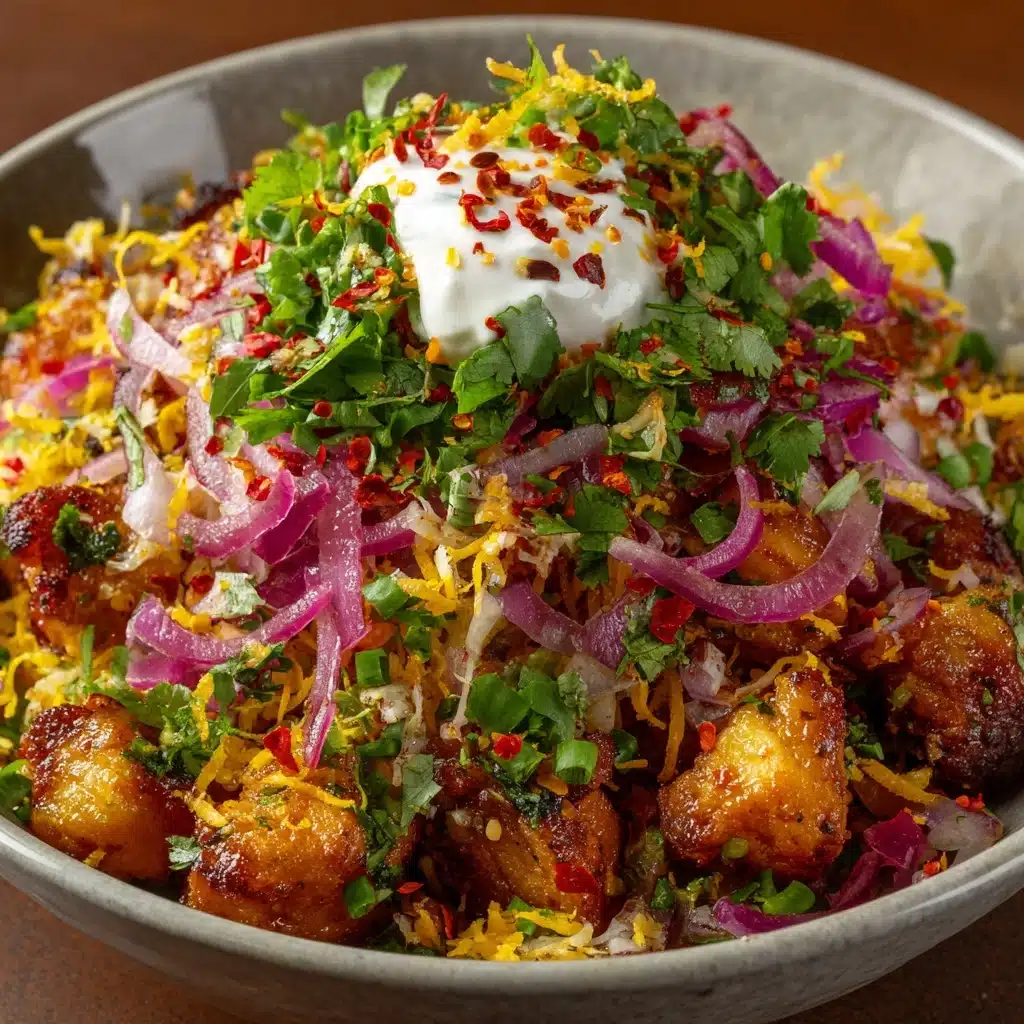
Garnishes
Bring out the best in your bowl by showering your noodles with freshly sliced green onions for a pop of fresh flavor and brightness. A sprinkle of toasted sesame seeds adds both visual flair and a gentle crunch — the finishing touch that makes High Protein Mongolian Noodles extra inviting. If you love a little heat, a light scattering of red pepper flakes or a swirl of sriracha can also wake up the senses.
Side Dishes
These hearty noodles pair wonderfully with quick stir-fried bok choy, steamed broccoli, or a crisp cucumber salad to keep things fresh and balanced. For something even simpler, add a small bowl of miso soup or sliced oranges to round out your Mongolian-inspired meal. The beauty of High Protein Mongolian Noodles is that they’re filling enough to shine as a main course, but light enough to leave room for a vibrant veggie side.
Creative Ways to Present
For a memorable presentation, try serving the noodles in wide, shallow bowls that really showcase the vibrant veggies and glossy sauce. If you’re entertaining or packing lunch, portion your High Protein Mongolian Noodles into meal-prep containers and serve with extra green onions and sauce on the side. Another fun option: serve noodles family-style on a big platter, letting everyone help themselves and add their favorite toppings.
Make Ahead and Storage
Storing Leftovers
Leftover High Protein Mongolian Noodles store beautifully! Let the noodles cool to room temperature, then spoon them into an airtight container. They’ll stay fresh in the refrigerator for up to 4 days. Keeping the green onions or garnishes separate helps retain their texture and flavor until serving.
Freezing
If you’d like to freeze extra portions, cool the noodles and portion them into freezer-safe containers, leaving a little space at the top. The sauce and noodles freeze surprisingly well, although the vegetables may lose a bit of crunch after thawing. Aim to enjoy within one month for the best flavor and texture.
Reheating
For best results, reheat High Protein Mongolian Noodles in a skillet over medium heat with a splash of water or soy sauce to loosen the noodles and revive the sauce. Stir gently until everything is piping hot. You can also microwave individual portions, covered, in short intervals, stirring between each, until heated through.
FAQs
Can I make High Protein Mongolian Noodles vegetarian?
Absolutely! Swap the ground meat for crumbled tofu or tempeh for a plant-based version that still delivers on protein and heartiness. Just brown the tofu or tempeh with a touch of oil, then follow the same steps as in the main recipe.
Are there gluten-free options for this recipe?
Yes, you can easily make High Protein Mongolian Noodles gluten-free by choosing gluten-free high-protein noodles and using tamari or coconut aminos instead of soy sauce. Double-check your hoisin sauce to ensure it’s gluten-free as well!
How spicy is this dish?
The base recipe is mild and works for nearly every palate. If you like some heat, feel free to add chili flakes or a splash of chili oil to your own bowl, or stir it in when sautéeing the garlic and ginger for a spicy kick.
Can I use different vegetables?
Definitely! Feel free to use whatever crunchy, quick-cooking vegetables you have on hand, like baby corn, snow peas, broccoli florets, or even mushrooms for extra savoriness. The vegetables are a great spot to get creative and clear out the fridge.
What’s the best way to meal prep High Protein Mongolian Noodles?
This recipe is fantastic for meal prep — just cook as directed, let it cool, then portion into containers. Store the garnishes separately and add them after reheating for the freshest flavor and best texture.
Final Thoughts
If you’re looking for a dinner that’s satisfyingly hearty, packed with color, and sky-high in flavor (not to mention protein!), these High Protein Mongolian Noodles are your answer. Whip up a batch, play with the veggies and garnishes, and make it your own. Your table is about to get a whole lot more delicious!
Print
High Protein Mongolian Noodles Recipe
- Prep Time: 10 minutes
- Cook Time: 15 minutes
- Total Time: 25 minutes
- Yield: 4 servings
- Category: Main Course
- Method: Stovetop
- Cuisine: Asian-Inspired
- Diet: Non-Vegetarian
Description
A delicious and protein-packed twist on classic Mongolian noodles featuring high-protein noodles and a savory, flavorful sauce. This quick and easy recipe is perfect for a satisfying weeknight meal.
Ingredients
For the noodles:
- 8 oz high-protein noodles (such as edamame, chickpea, or lentil noodles)
For the sauce:
- 1 lb lean ground beef or ground turkey
- 1 tablespoon olive oil
- 1/2 cup low-sodium soy sauce
- 1/4 cup water
- 2 tablespoons brown sugar or coconut sugar
- 1 tablespoon hoisin sauce
- 1 tablespoon rice vinegar
- 3 garlic cloves, minced
- 1 teaspoon fresh ginger, grated
- 1 tablespoon cornstarch mixed with 2 tablespoons water (slurry)
- 1 cup shredded carrots
- 1 cup snap peas or bell pepper strips
- 2 green onions, chopped
- 1 tablespoon sesame seeds for garnish (optional)
Instructions
- Cook the noodles: Cook the high-protein noodles according to the package instructions, then drain and set aside.
- Cook the meat: In a large skillet or wok, heat the olive oil over medium-high heat. Add the ground meat and cook until browned, breaking it up as it cooks. Once fully cooked, add the garlic and ginger and sauté for 1–2 minutes until fragrant.
- Prepare the sauce: In a small bowl, whisk together the soy sauce, water, brown sugar, hoisin sauce, and rice vinegar. Pour the sauce into the skillet and bring to a simmer. Stir in the cornstarch slurry and cook until the sauce thickens, about 2–3 minutes.
- Add vegetables: Add the shredded carrots and snap peas, cooking just until tender but still crisp, about 2 minutes.
- Combine everything: Toss in the cooked noodles and stir well to coat. Cook for 1 more minute to heat through.
- Serve: Remove from heat, garnish with green onions and sesame seeds if desired, and serve hot.
Notes
- You can substitute ground meat with crumbled tofu or tempeh for a vegetarian version.
- Adjust sweetness and spice level to taste by adding more sugar or red pepper flakes.

